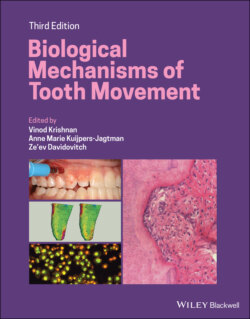Читать книгу Biological Mechanisms of Tooth Movement - Группа авторов - Страница 71
Neuropeptides and OTM: A synthesis
ОглавлениеNorevall et al. (1995) observed that the expression of CGRP and SP increases in the PDL in response to buccally directed OTM of the upper first molar in the rat. Further, their continuous observations suggest that VIP and NPY, in contrast to the main sensory neuropeptides, CGRP and SP, are not involved in the tissue processes that occur in the remodeling of PDL and alveolar bone during OTM. In relation to tooth movement, Kvinnsland and Kvinnsland (1990) localized CGRP in the pulp and PDL of rats receiving orthodontic forces to maxillary molars for five days. In unstressed teeth, CGRP immunoreactivity was localized primarily in pulp and PDL nerves surrounding blood vessels. In moving teeth, the number of CGRP‐containing nerves in both pulp and PDL increased, and their staining intensified, particularly in PDL tension sites. In these areas, dark “spots,” which were probably fibroblasts that have bound CGRP released from stressed sensory nerve endings, were observed (Figure 4.4). The experimental tooth movement induces dynamic changes in density and distribution of periodontal as well as pulpal nerve fibers, indicating their involvement in both early stages of PDL remodeling and, later, in its regenerative processes, generally occurring in concert with modulation of blood vessels (Vandevska‐Radunovic et al., 1997). The study by Kato et al. (1996) suggested that the neurofilament protein (NFP)‐, CGRP‐, VIP‐ and NPY‐containing nerve fibers in the PDL play important roles in the modulation of pain, tissue remodeling, and blood flow regulation during tooth movement.
